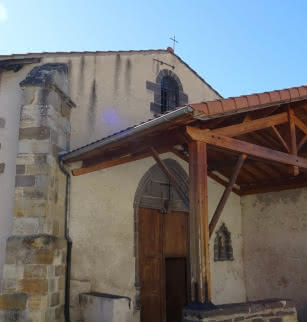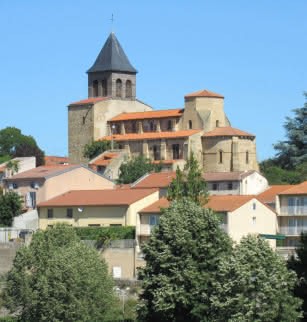Saint-Etienne Church

In the 19th century, Église Saint-Étienne replaced an older church from the 12th century. It adopted a neo-Roman style.
The present-day church is built on the site of an older church from the 12th century. This old Romanesque-style single-nave church was extended in 1685 (south side) then in the 18th century (north side) to respond to the population increase. From the time of the French Revolution, the building experienced a number of damaging incidents, with burned altars and a partly destroyed bell.
In 1865, civil and religious authorities agreed to build a new, larger church on the same site. They called on the architect Agis-Léon Ledru (1816-1885), second Prix de Rome in 1844, the architect of the Royat and La Bourboule spa resorts. The new church, consecrated in 1870, is neo-Romanesque in style with semi-circular aches and barrel vault. Its construction led to the demolition of part of the former village fort.
The church’s northern gate features a reclaimed sculpted tympanum, sadly hammered, depicting a Piéta (15th century). In the church’s apse, a stone from the fort’s postern is sealed into the wall. It depicts the Christogramme, formed by a monogram of Christ IHS: Iesus Hominum Salvator (Jesus saviour of men).
In the 20th century some renovations were carried out, including refurbishment of the choir (1958), the transept (1959) and finishing of the aisle (1963). The church was fully restored in 1998.
Opening dates and times
All year round, daily between 8.30 am and 5 pm.
Prices
- Free access.


























